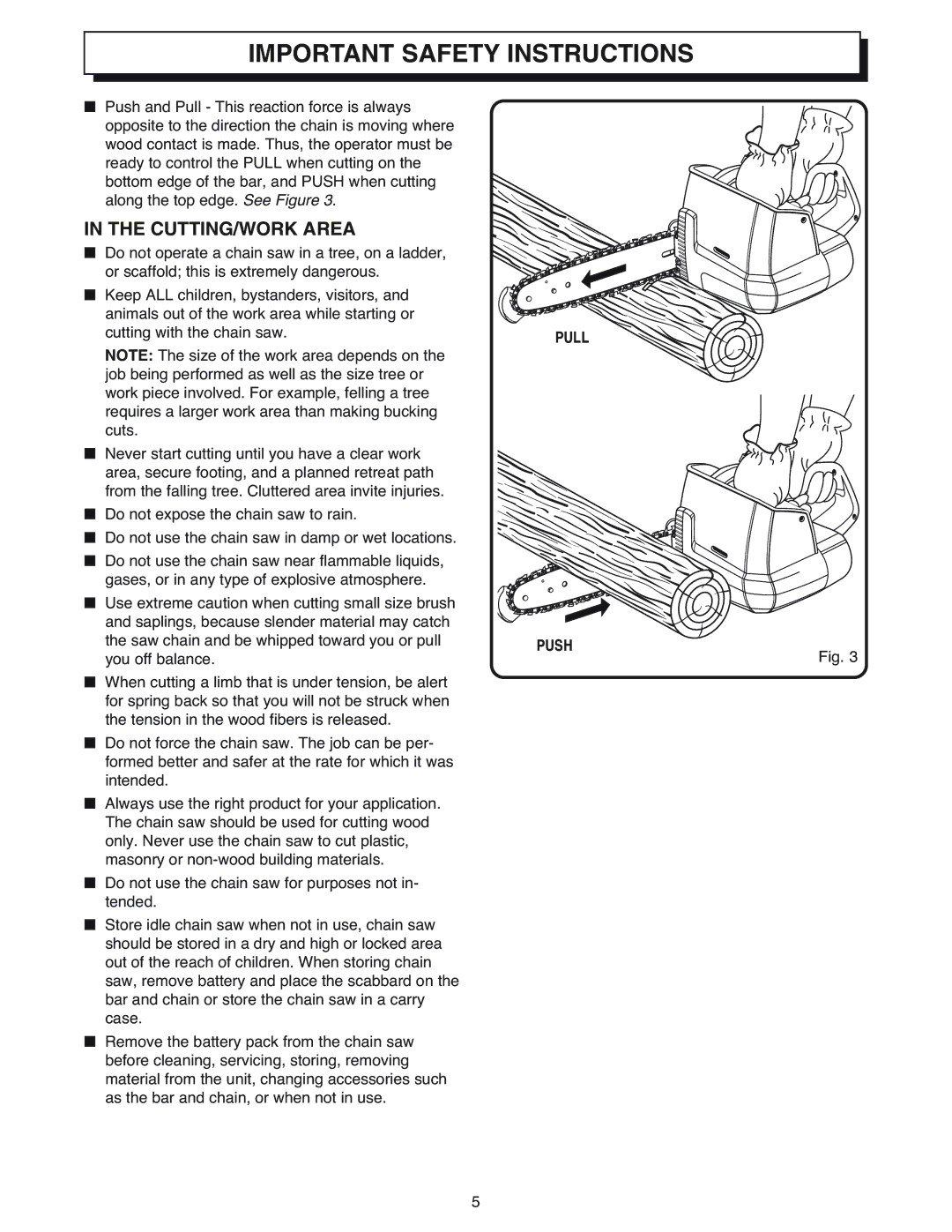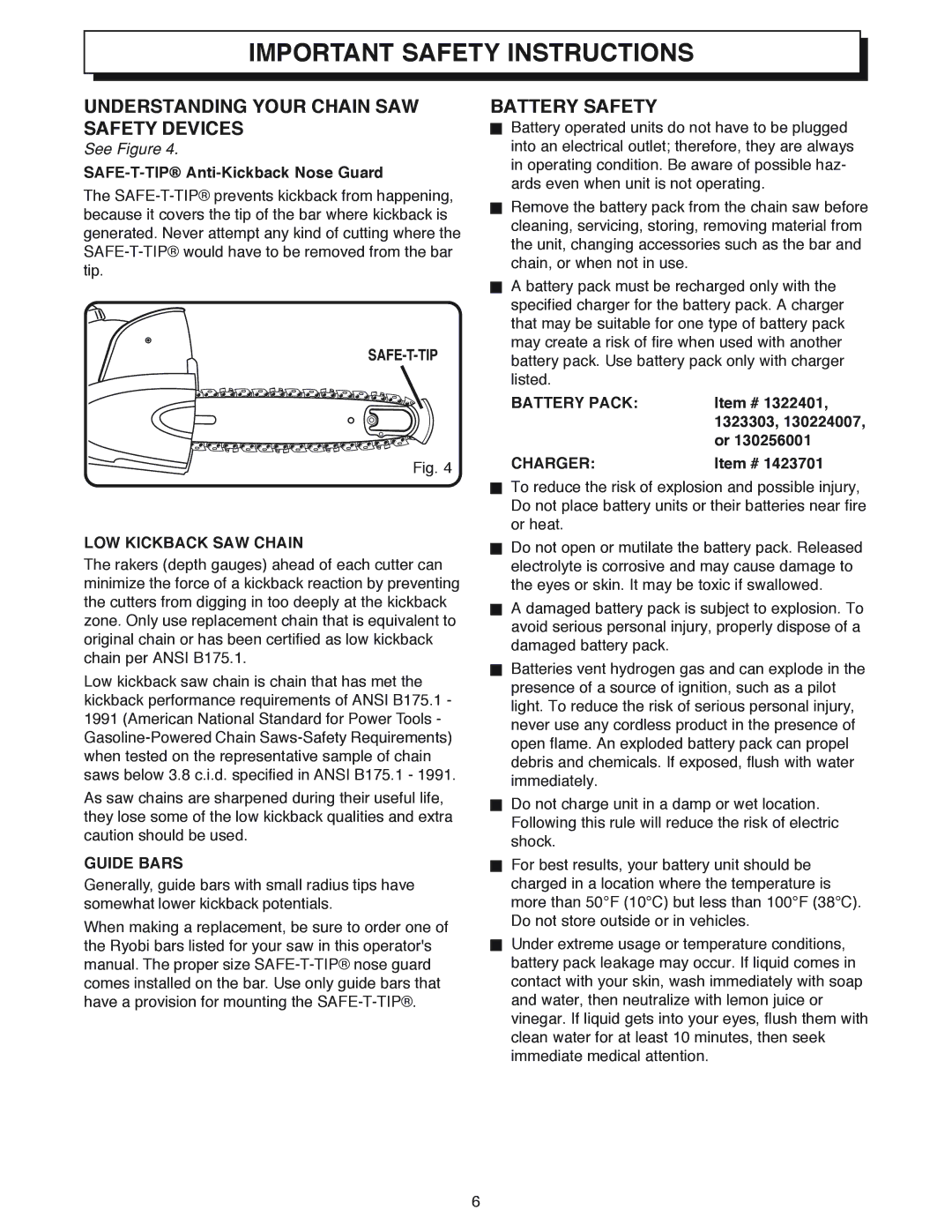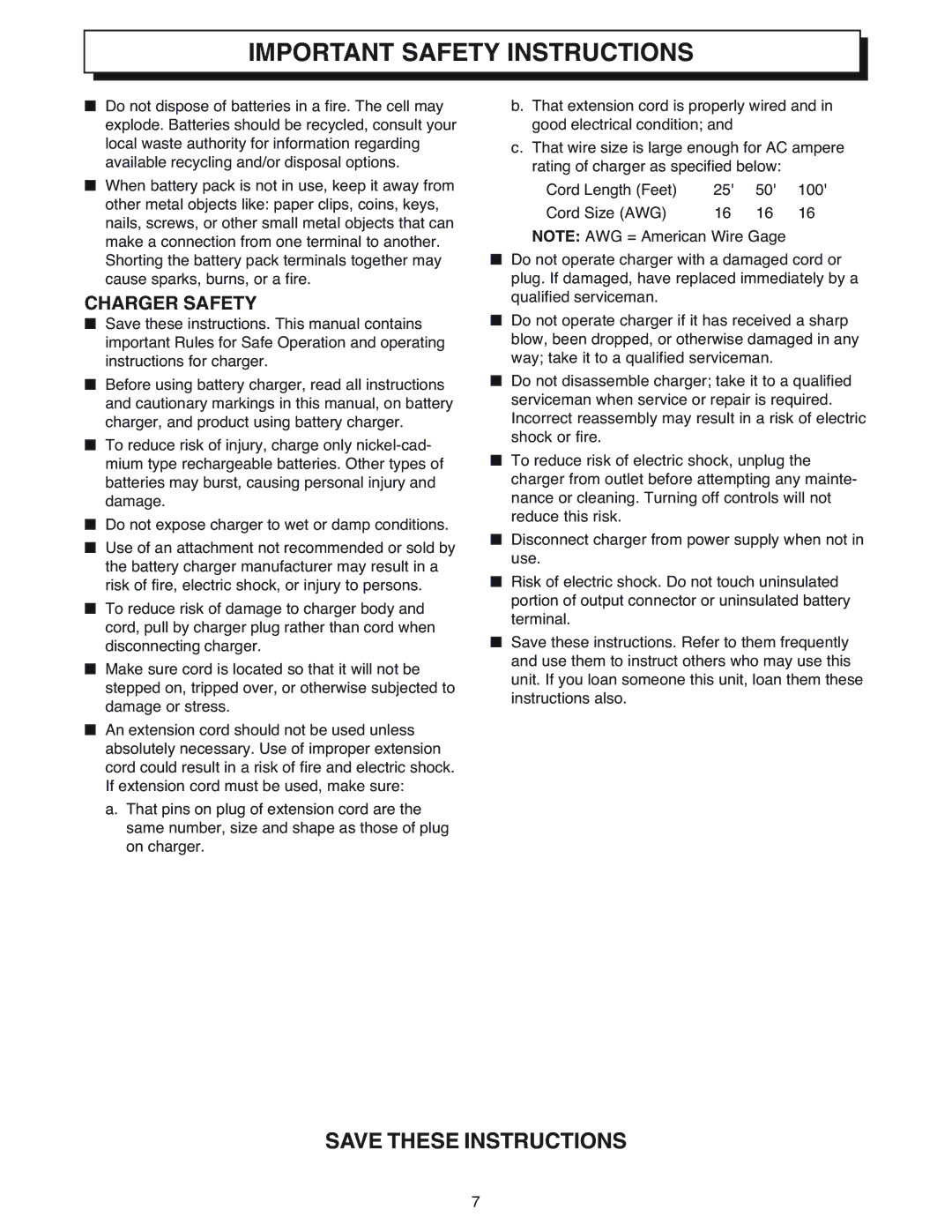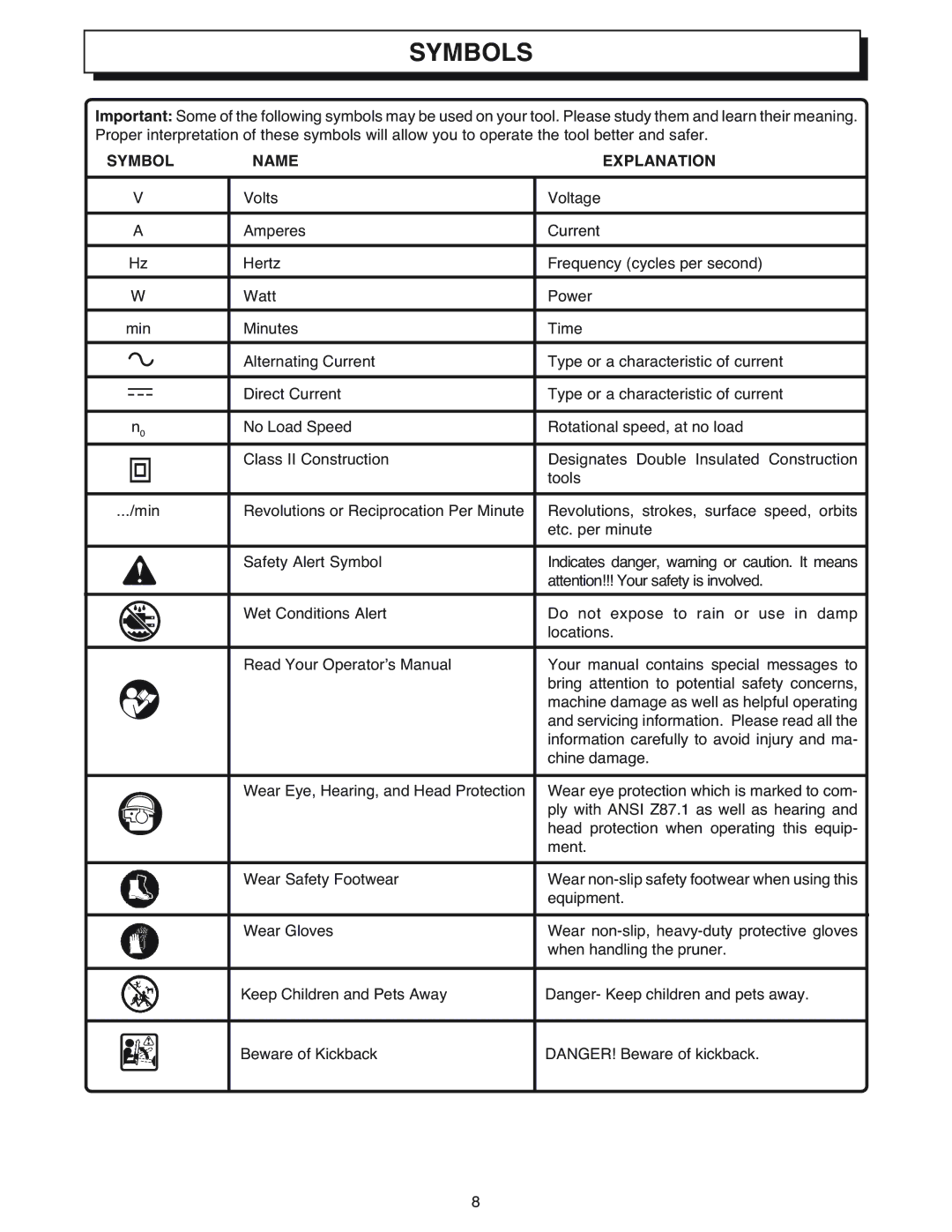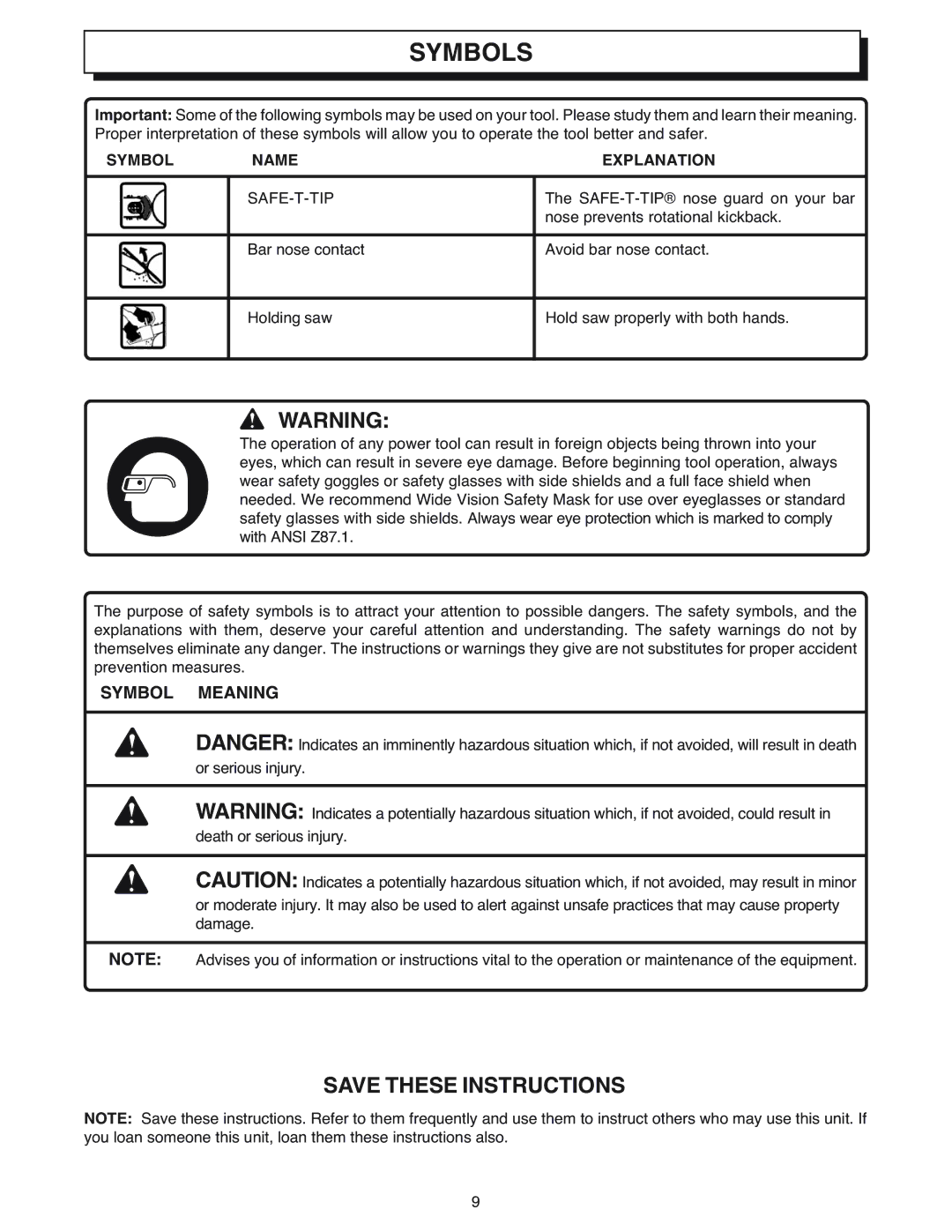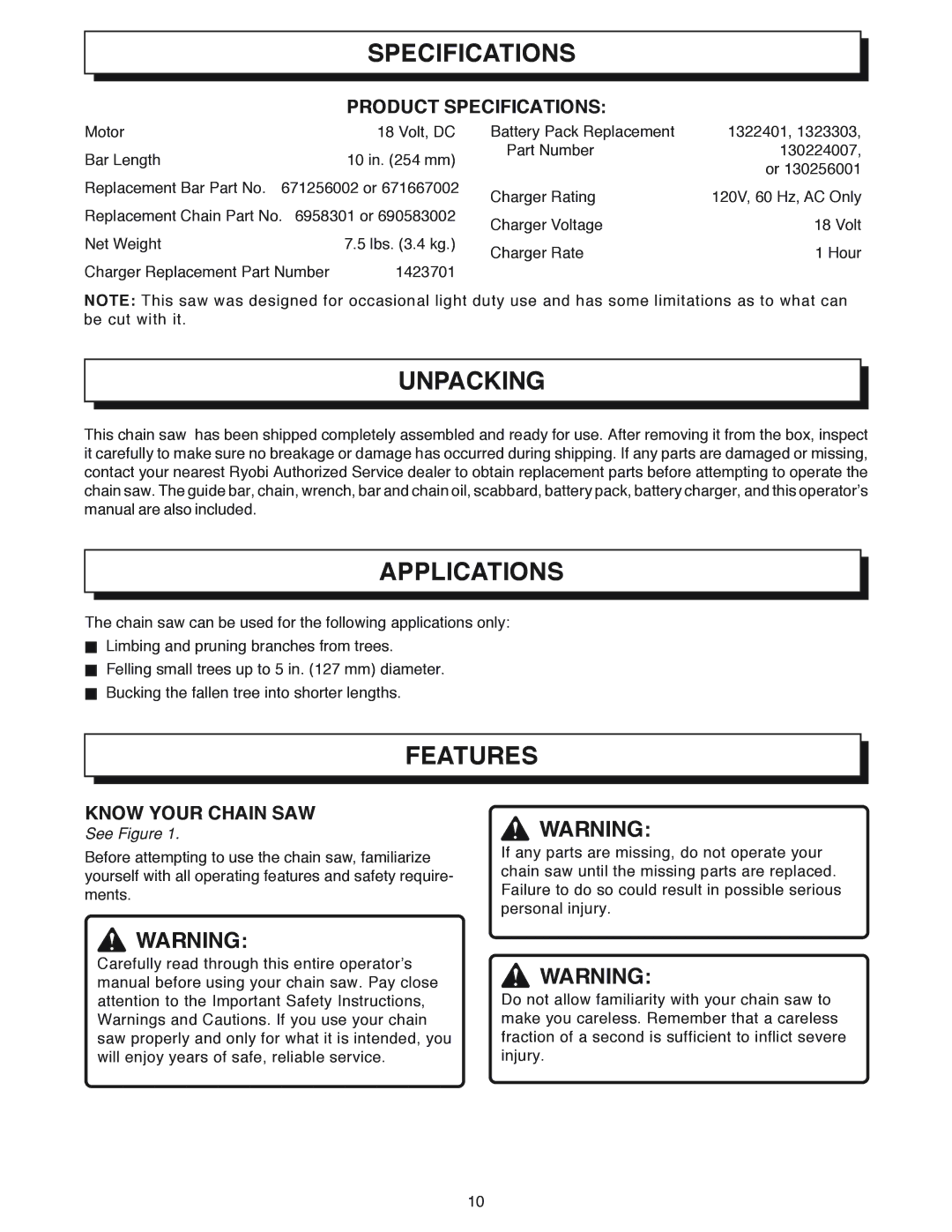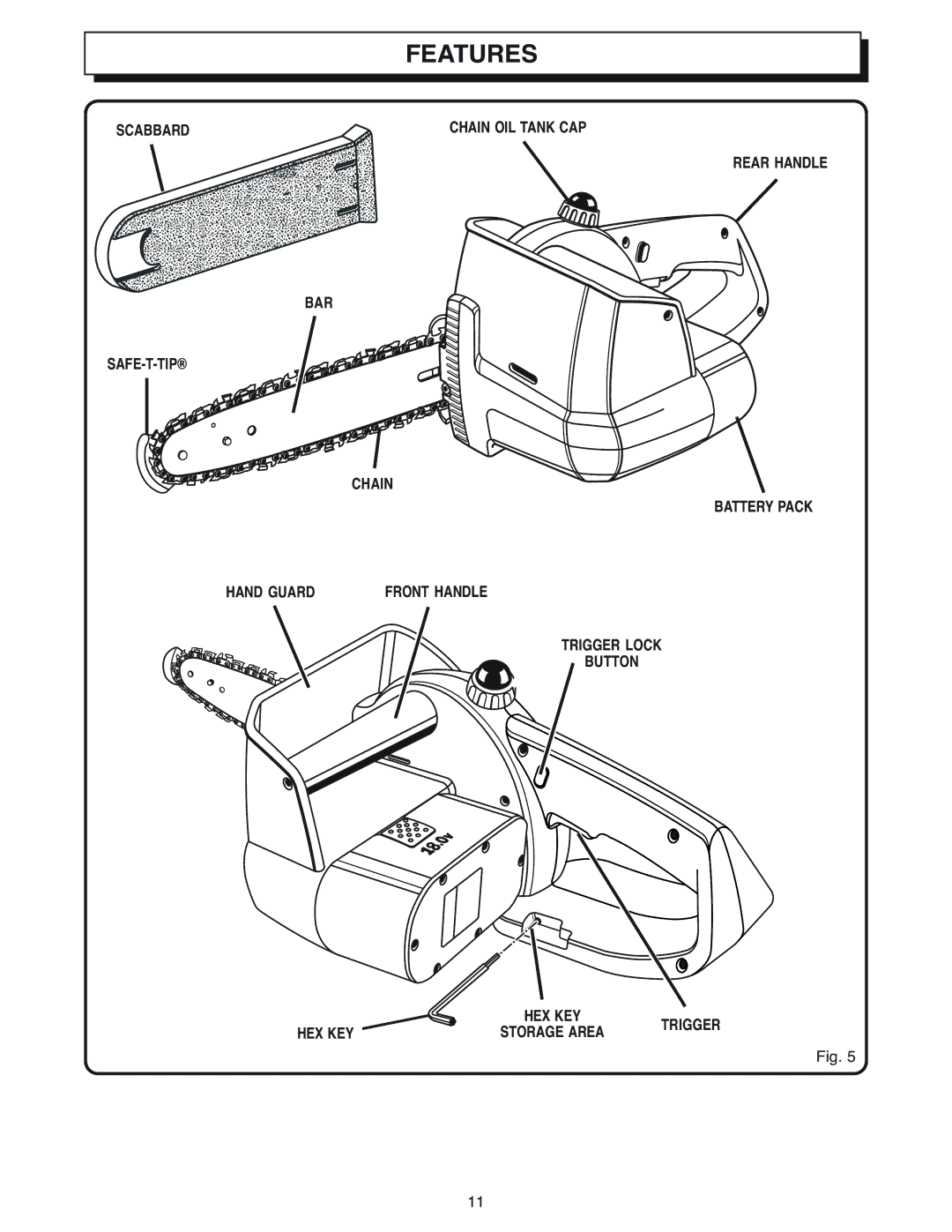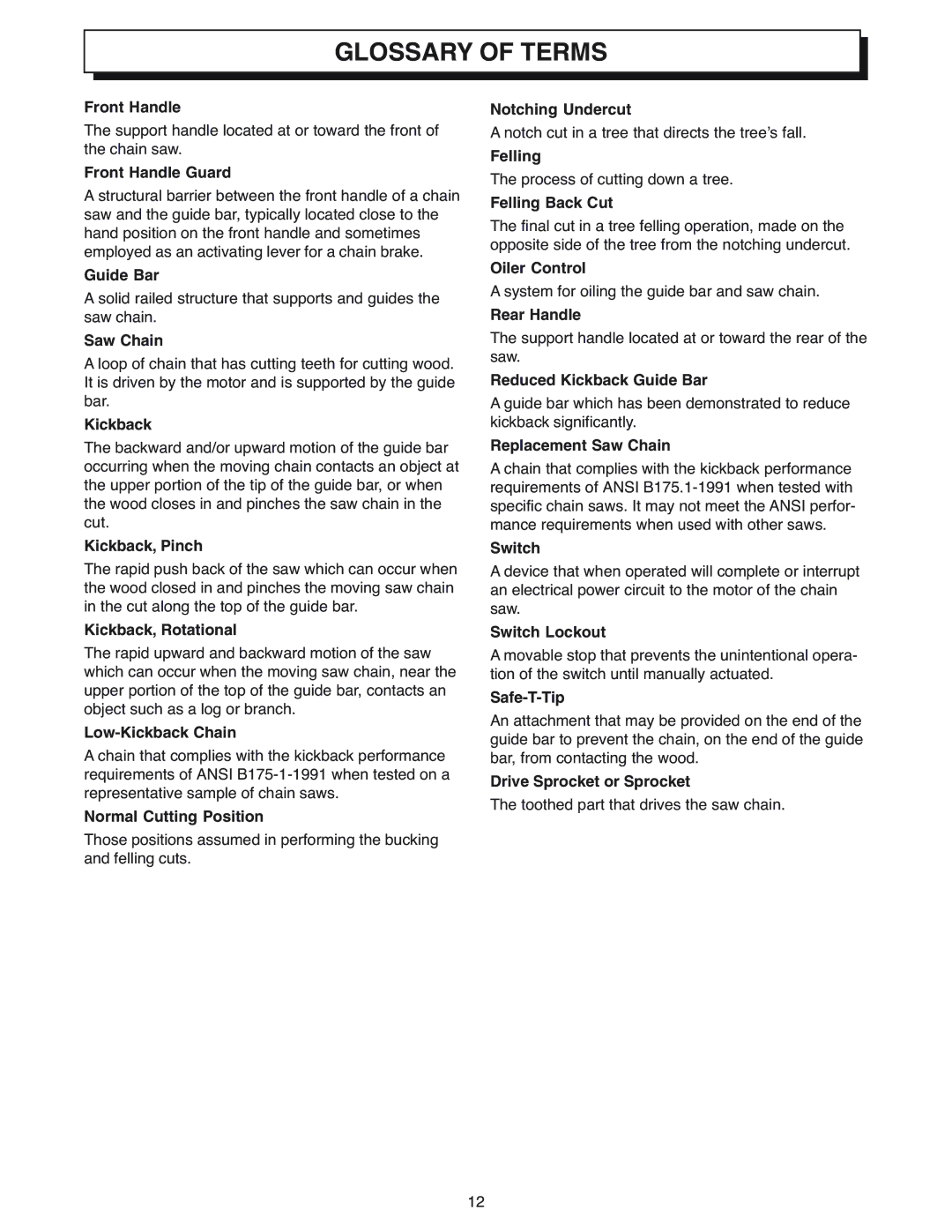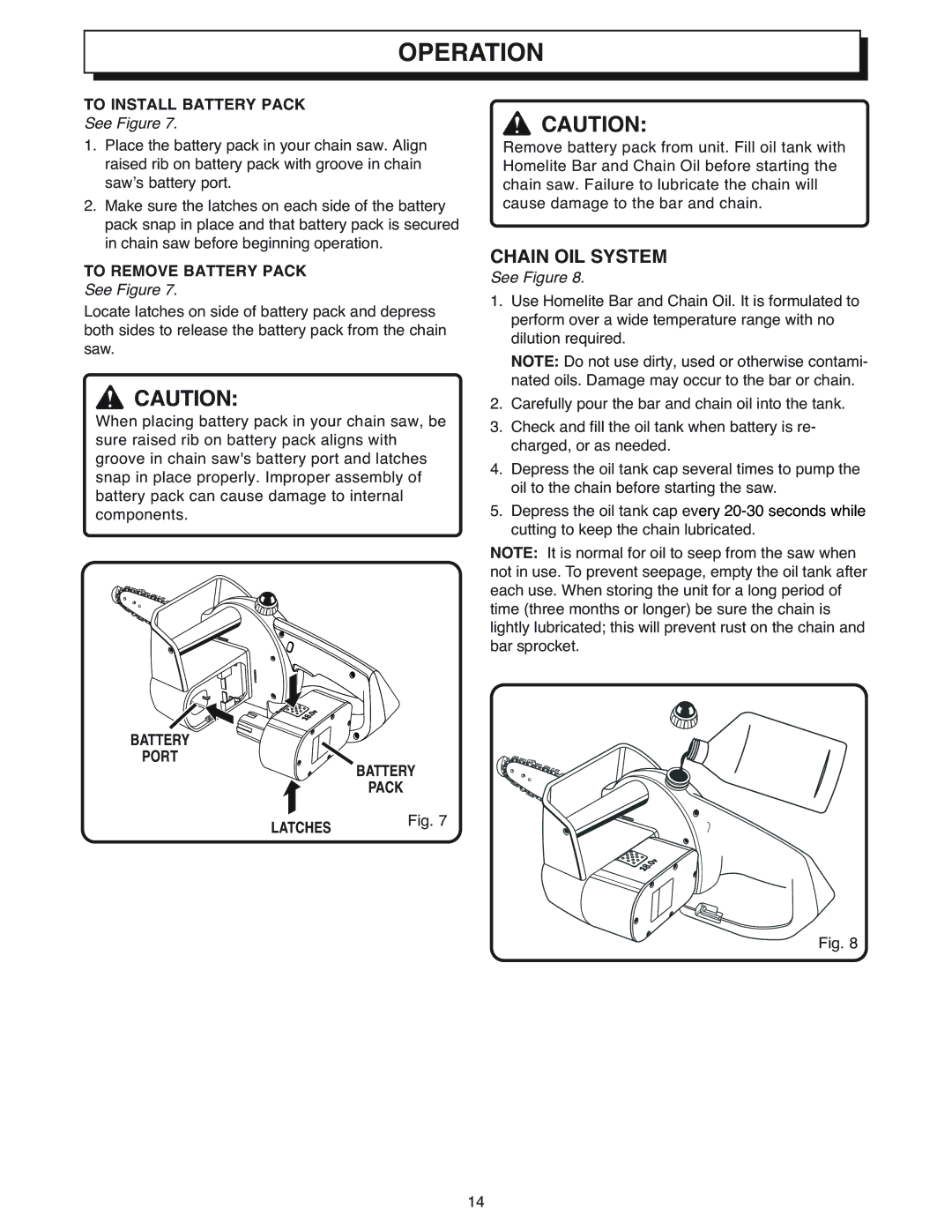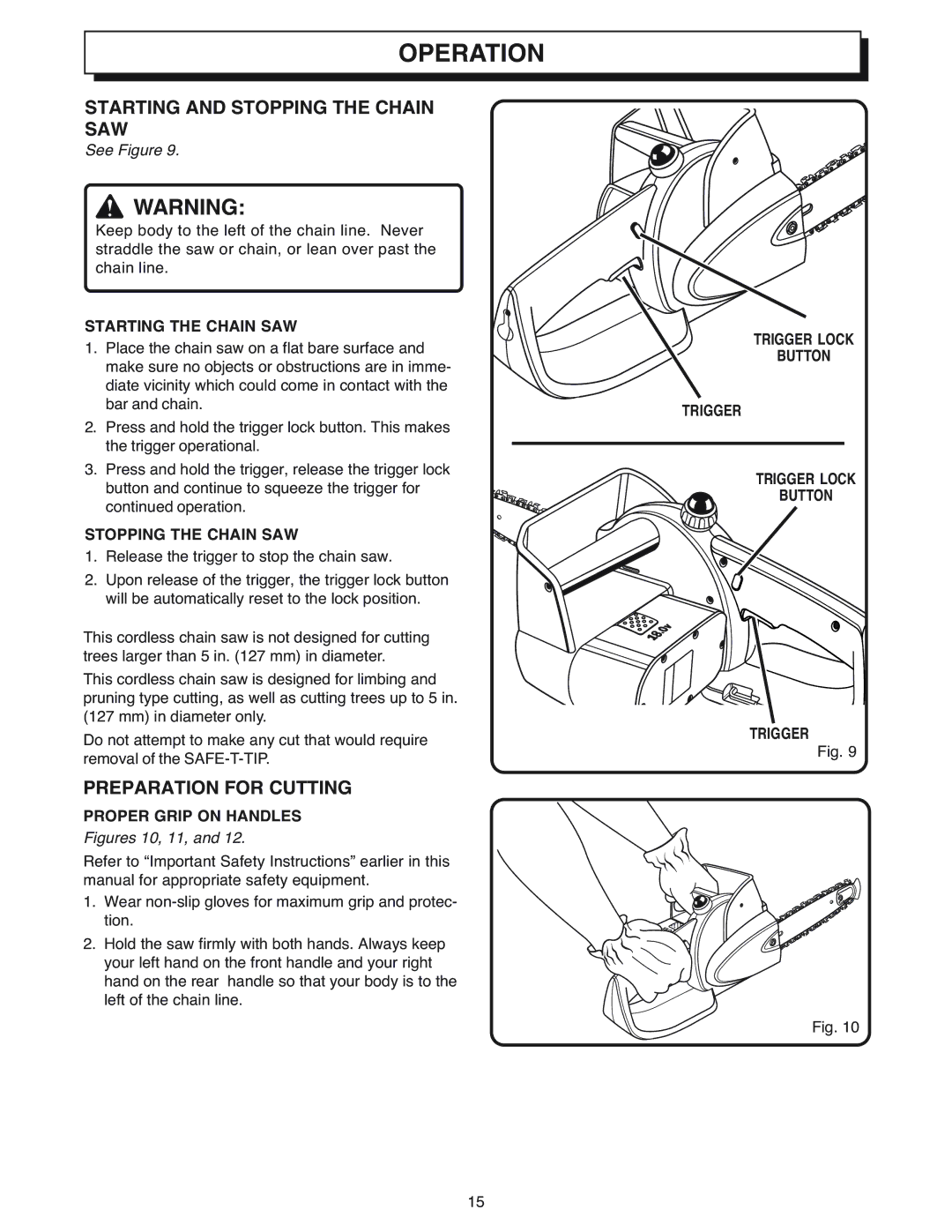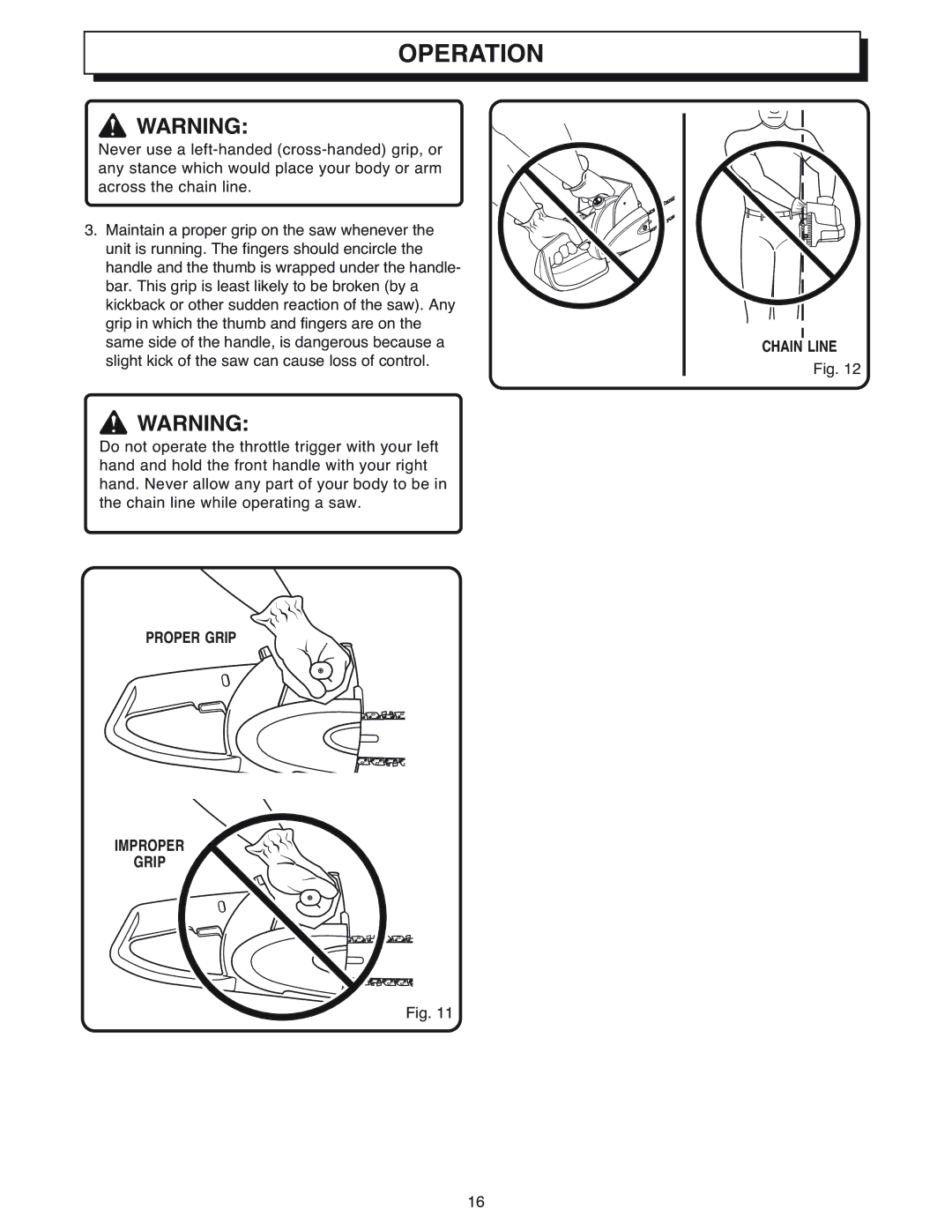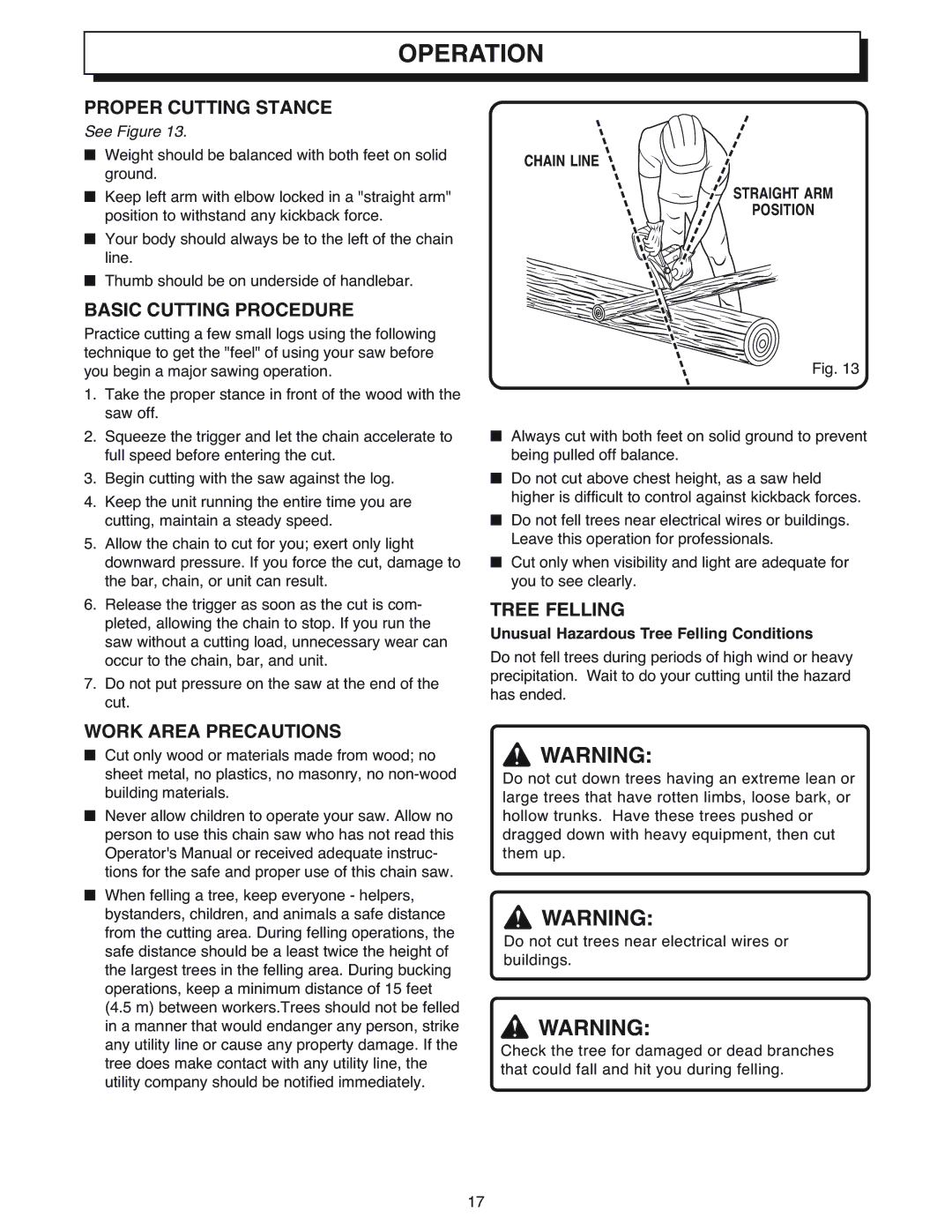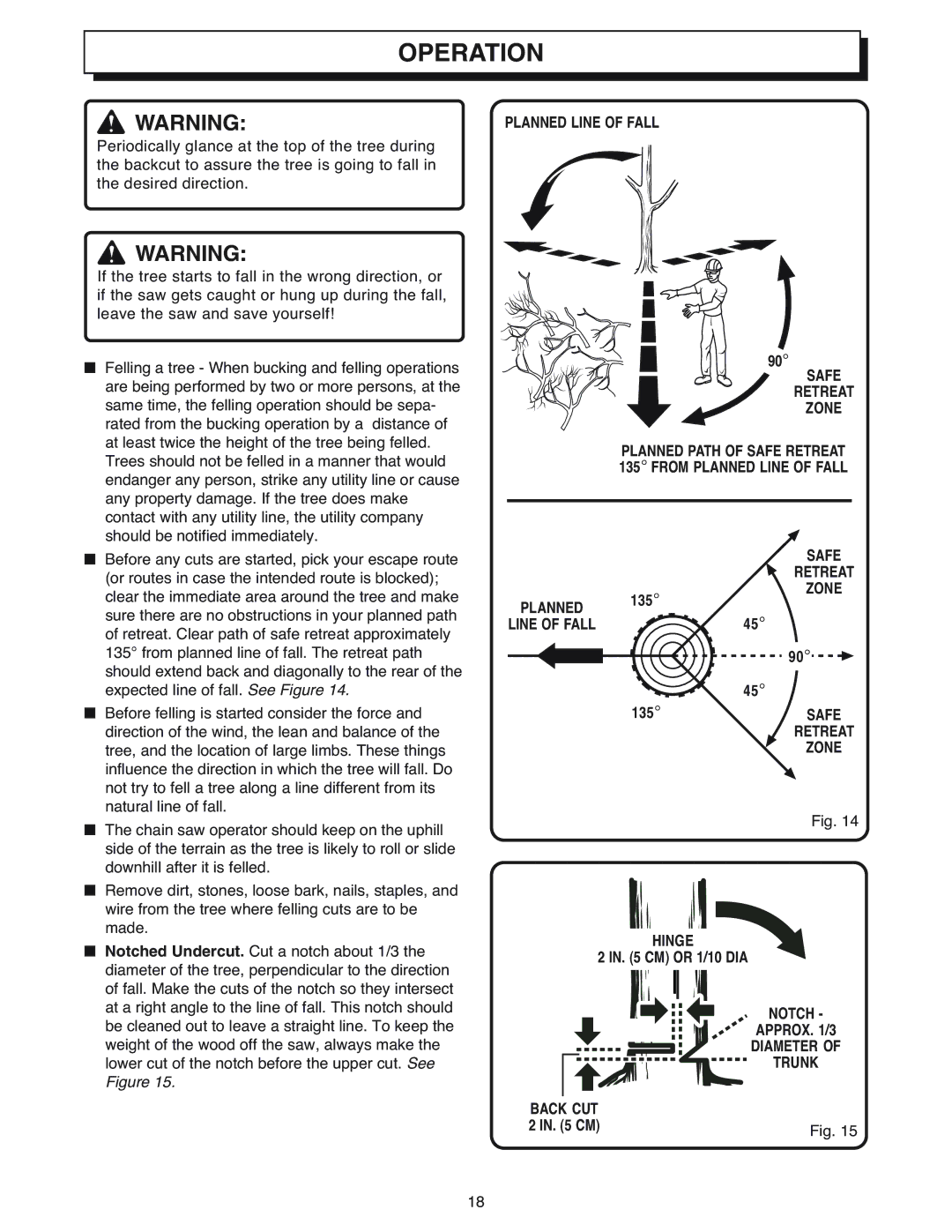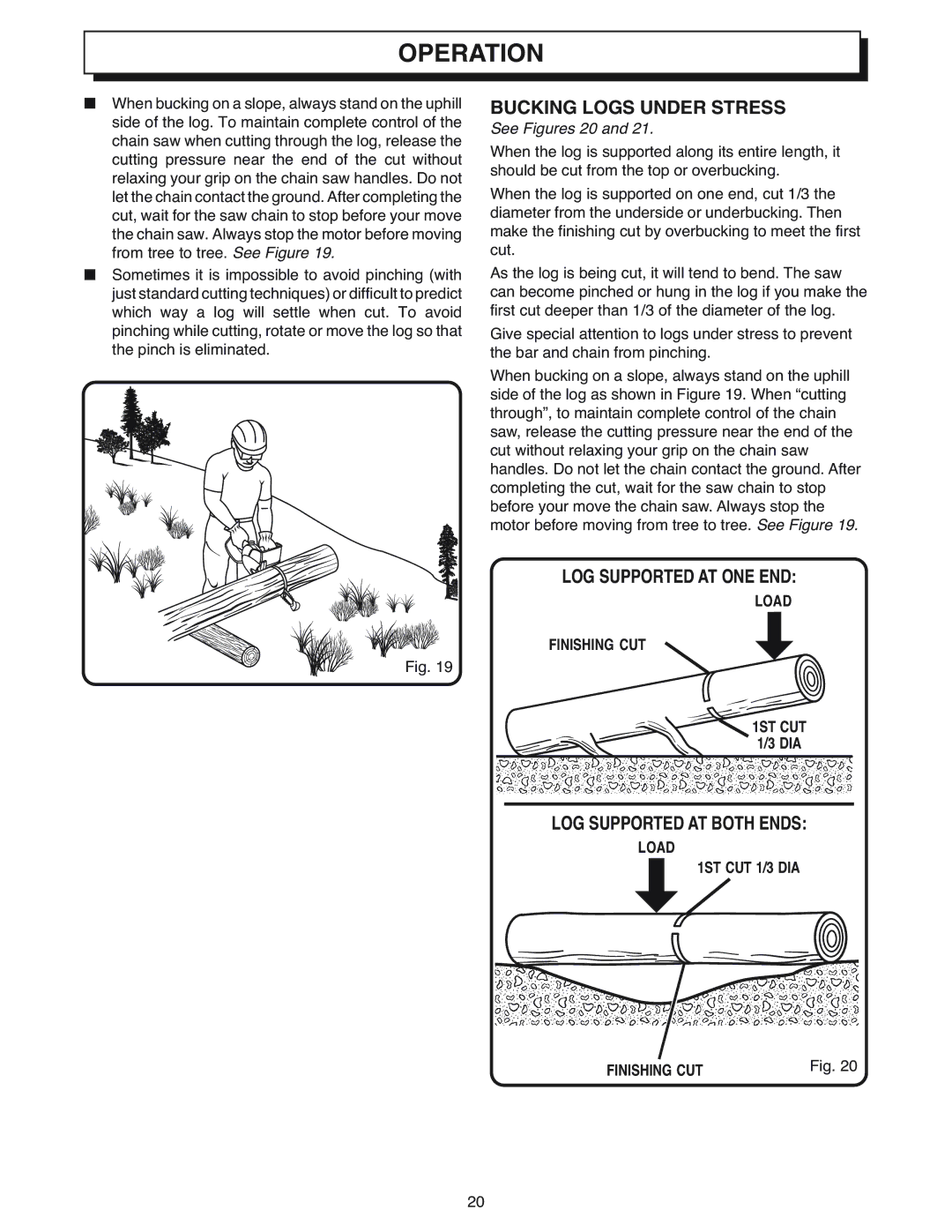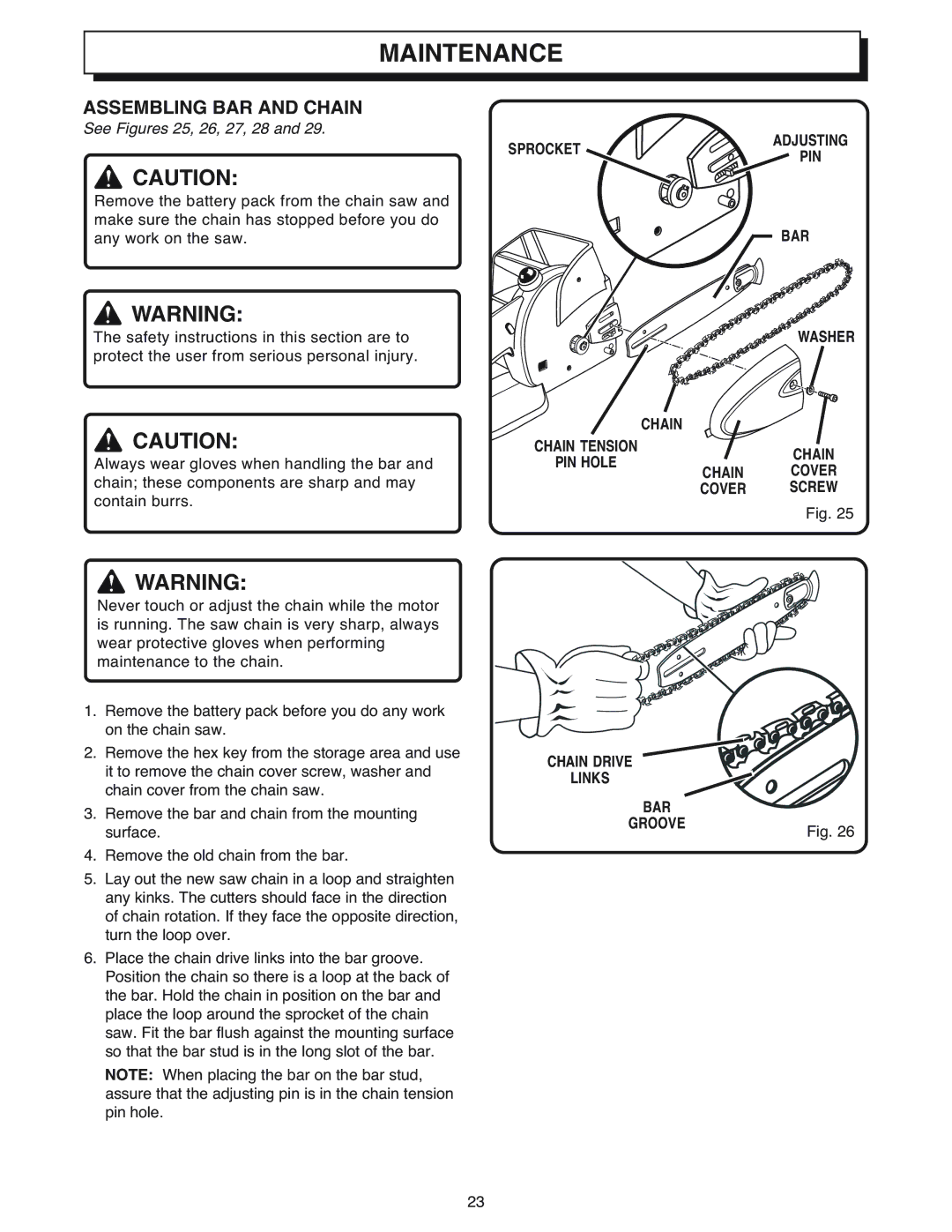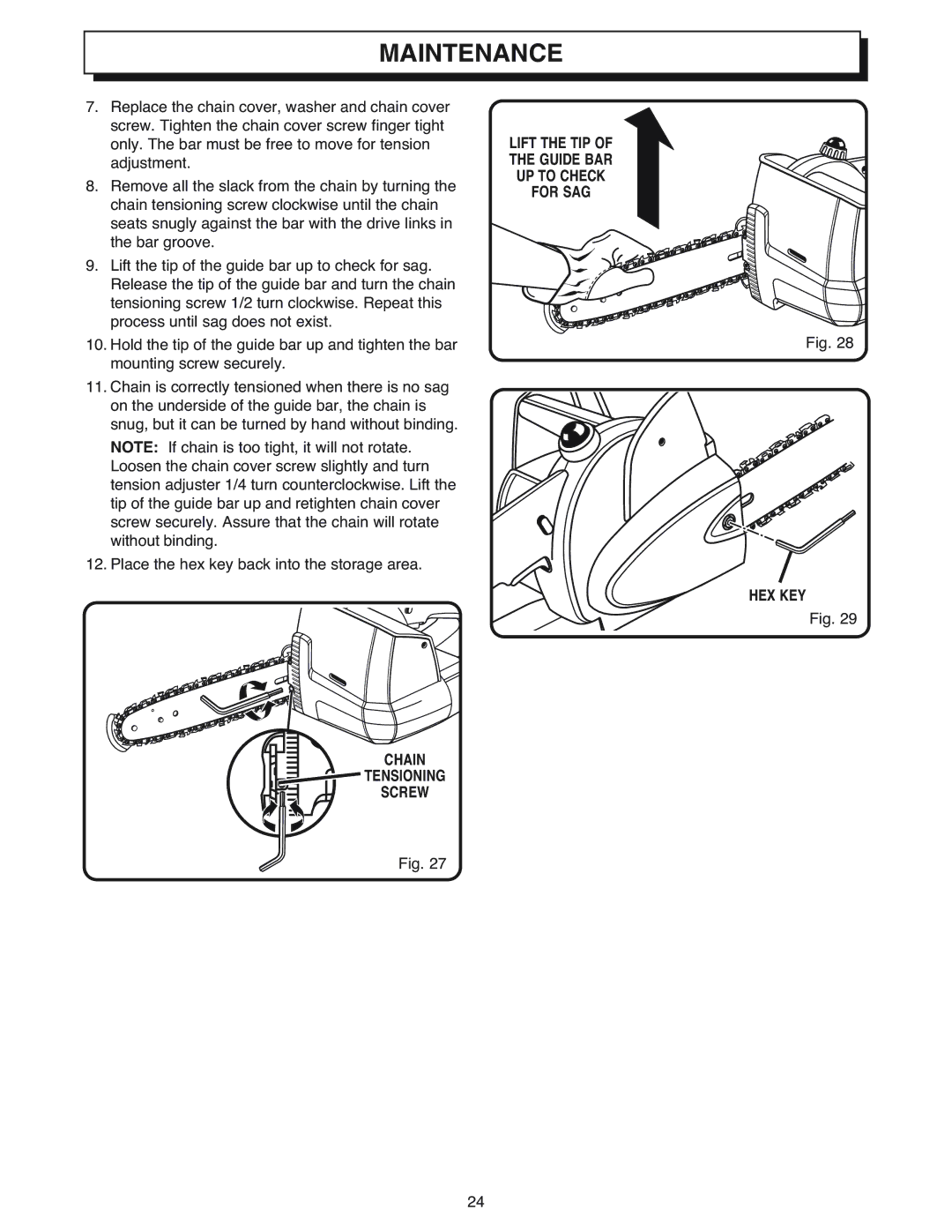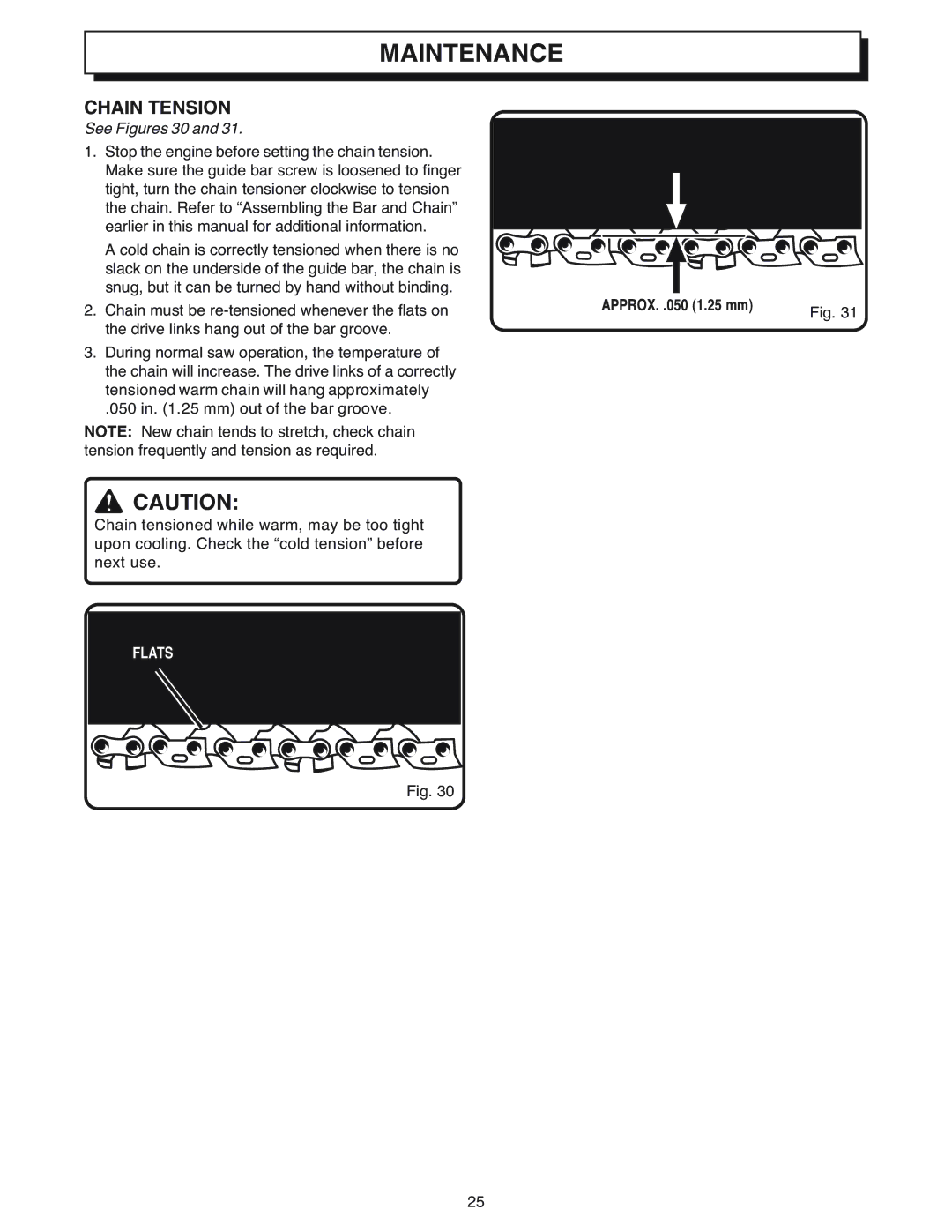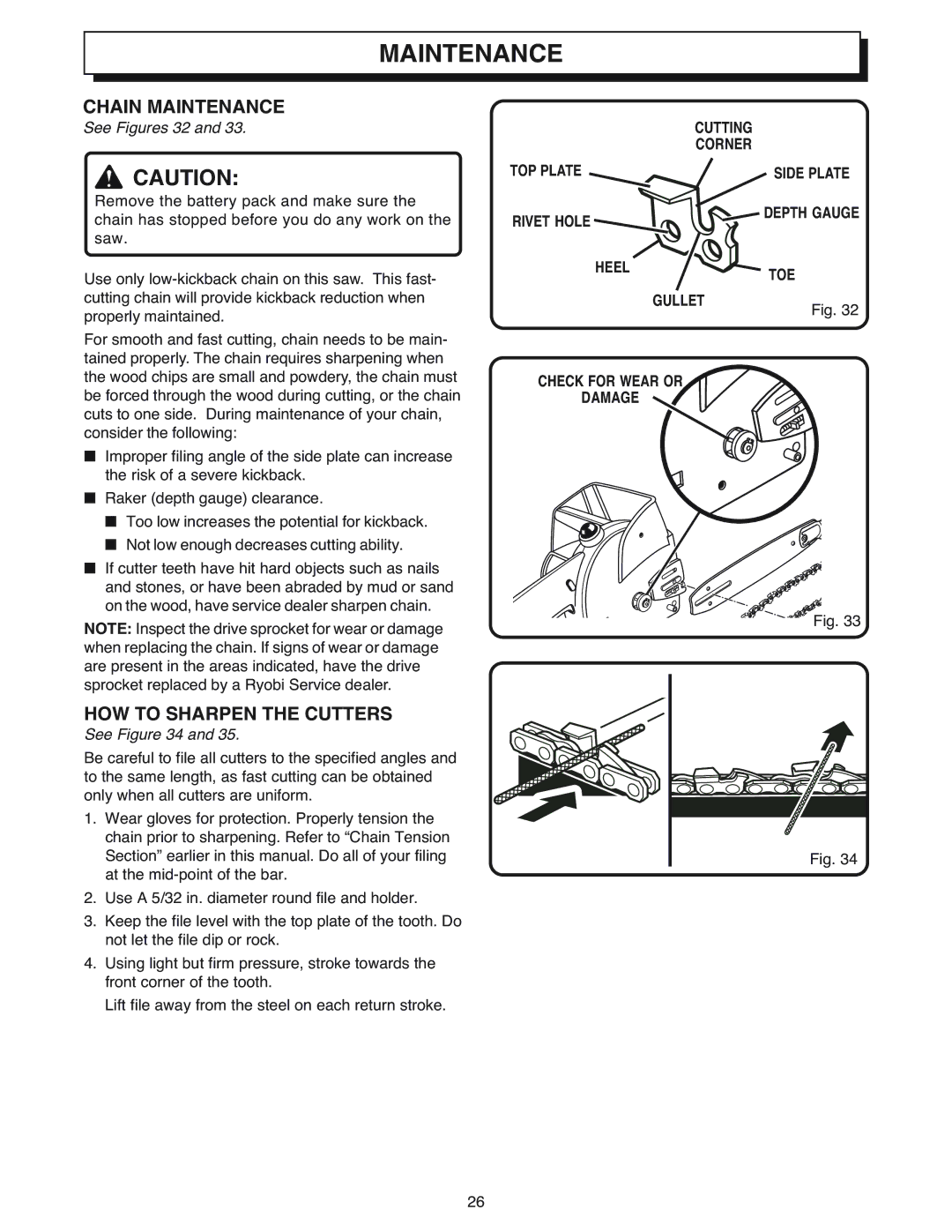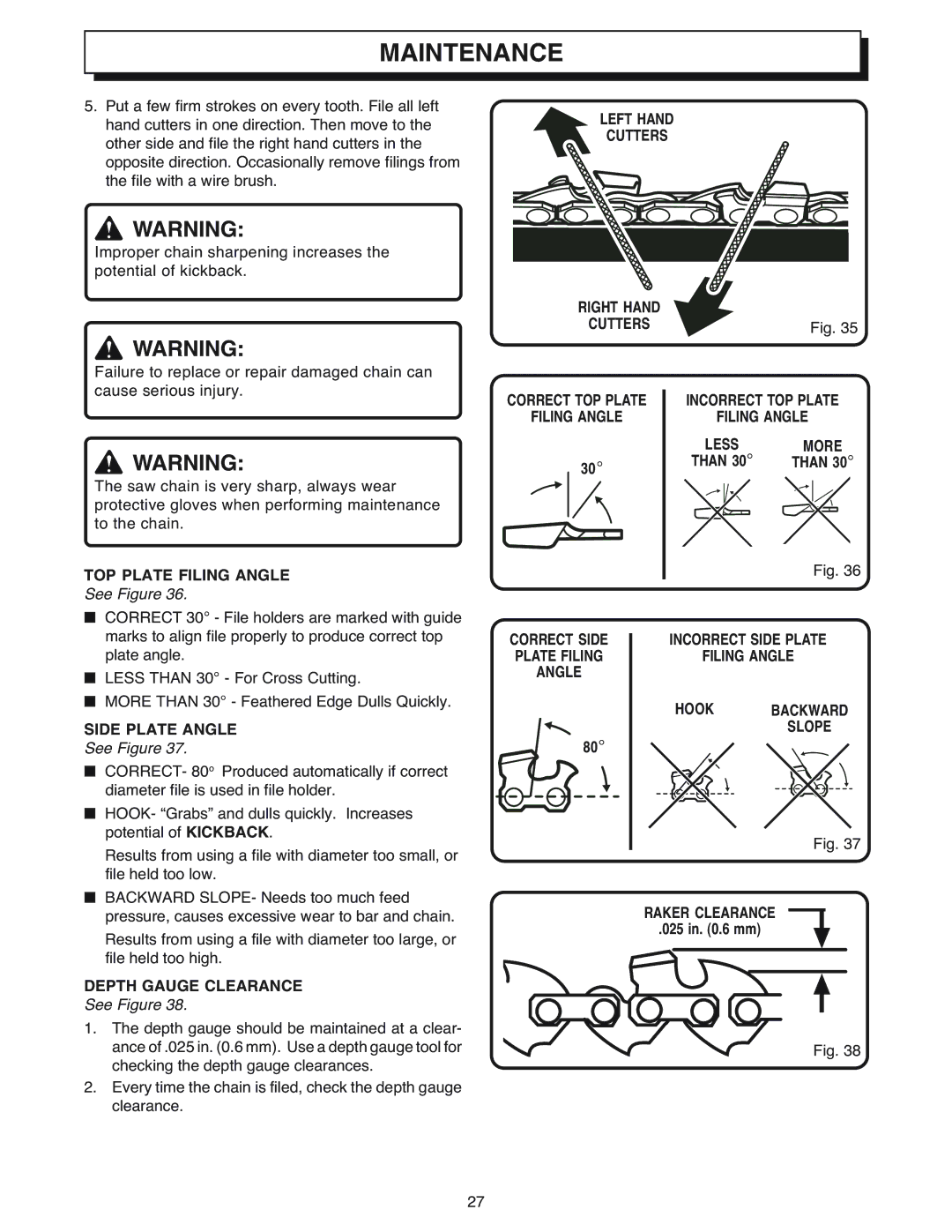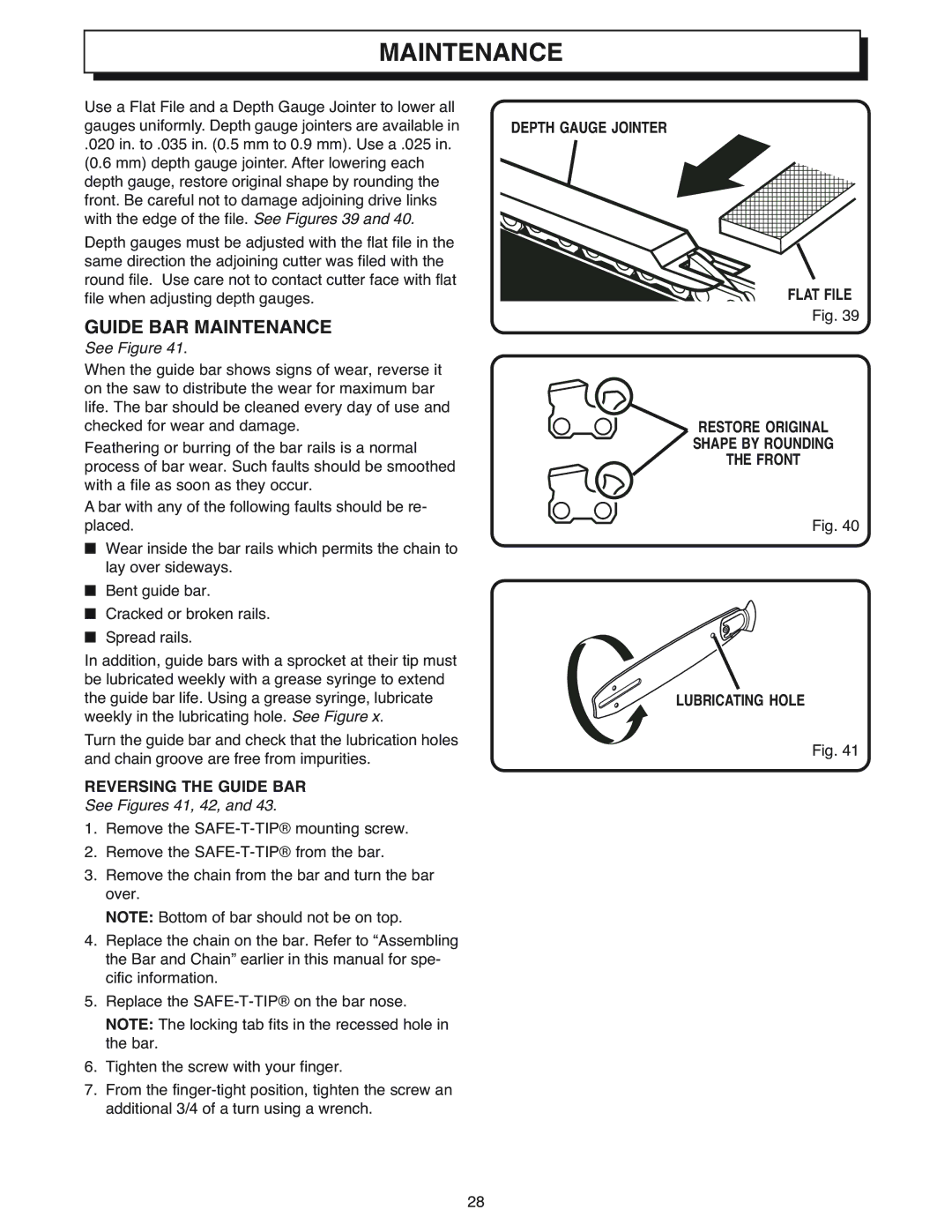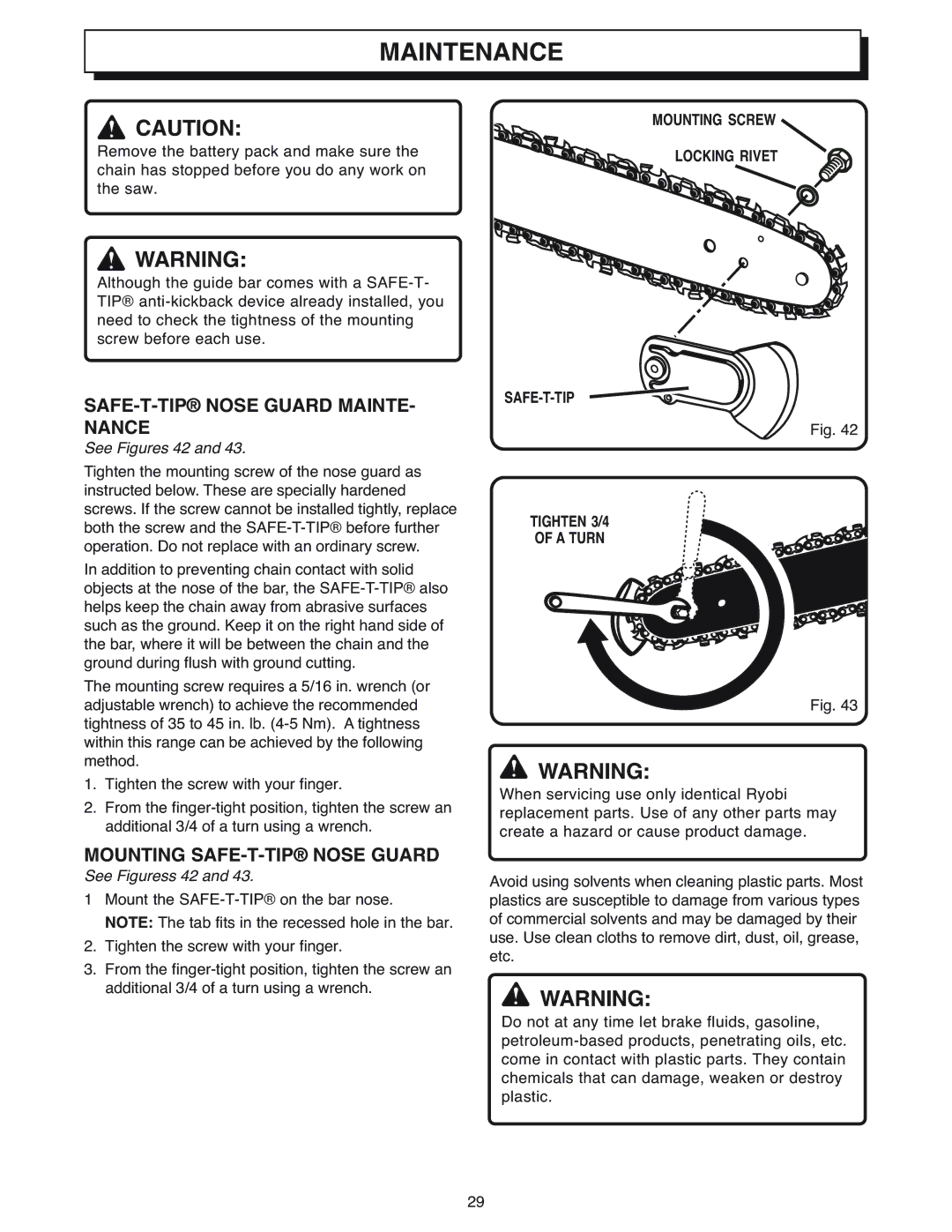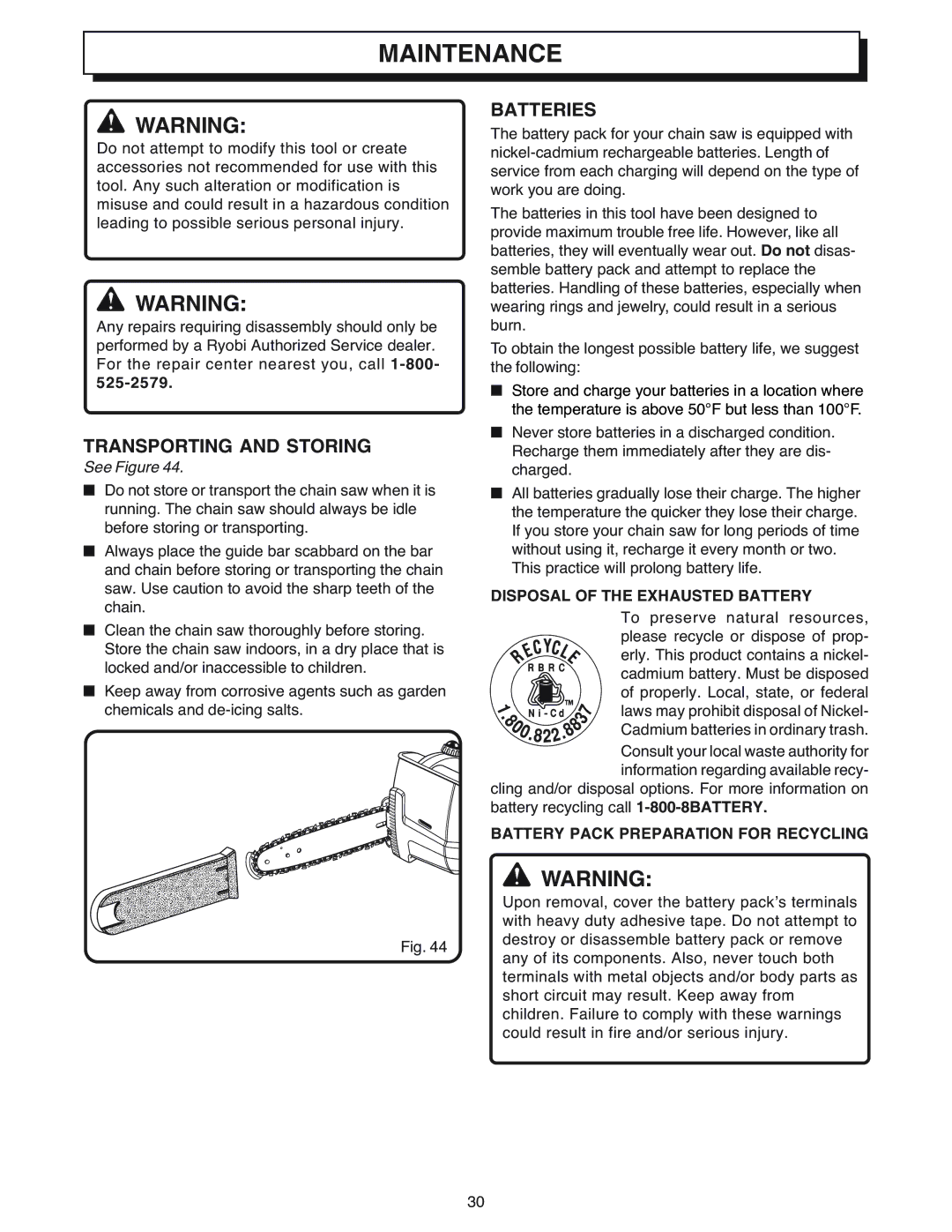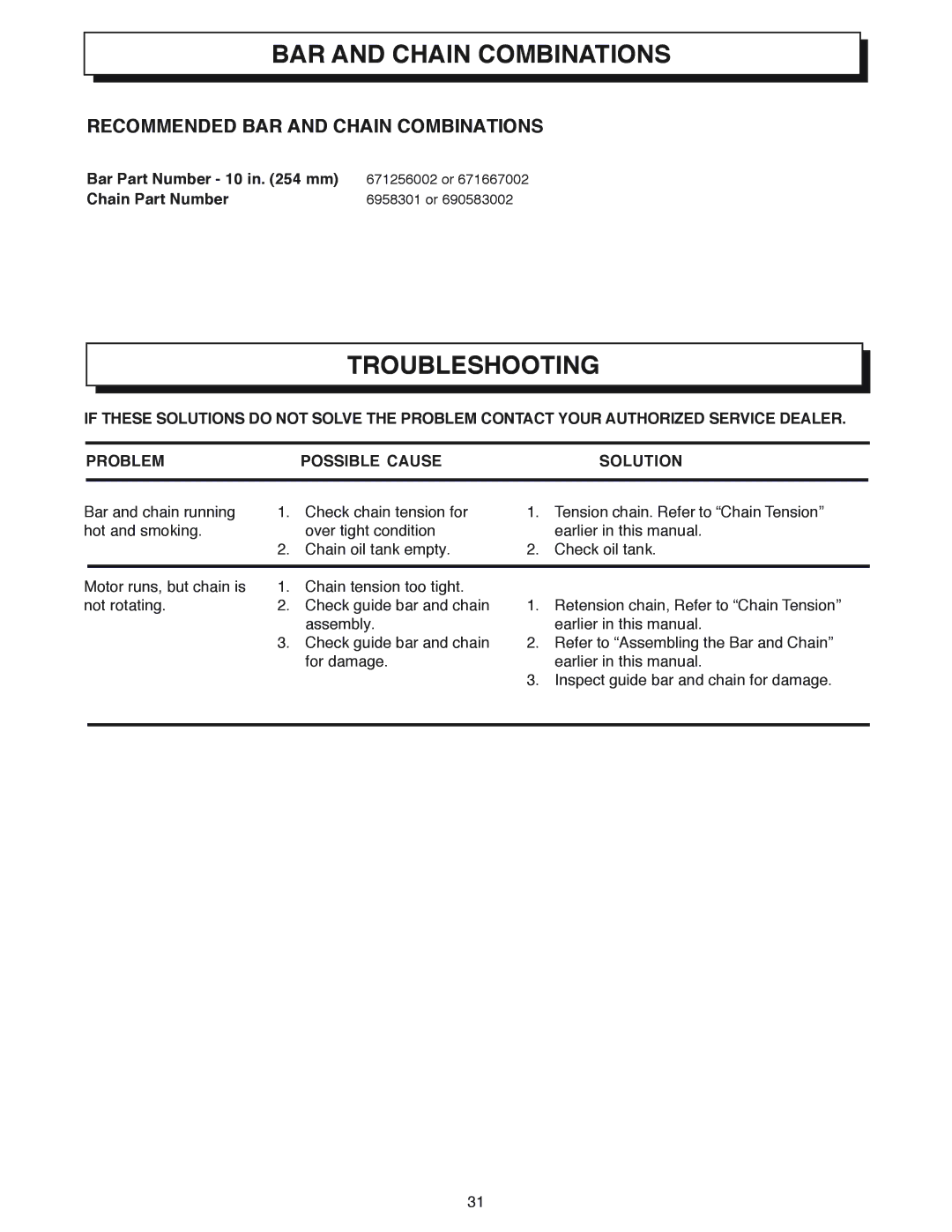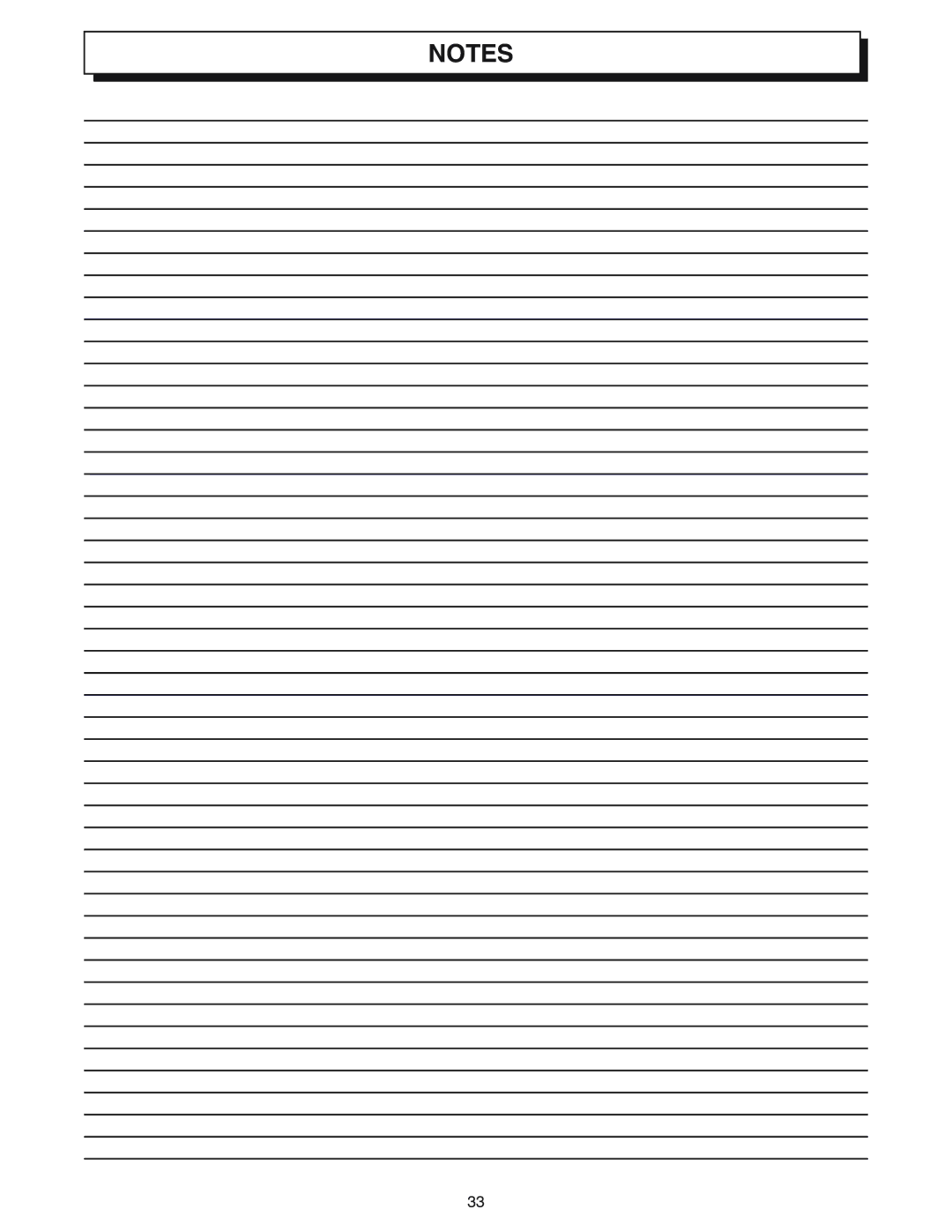
OPERATION
PROPER CUTTING STANCE
See Figure 13.
■Weight should be balanced with both feet on solid ground.
■Keep left arm with elbow locked in a "straight arm" position to withstand any kickback force.
■Your body should always be to the left of the chain line.
■Thumb should be on underside of handlebar.
BASIC CUTTING PROCEDURE
Practice cutting a few small logs using the following technique to get the "feel" of using your saw before you begin a major sawing operation.
1.Take the proper stance in front of the wood with the saw off.
2.Squeeze the trigger and let the chain accelerate to full speed before entering the cut.
3.Begin cutting with the saw against the log.
4.Keep the unit running the entire time you are cutting, maintain a steady speed.
5.Allow the chain to cut for you; exert only light downward pressure. If you force the cut, damage to the bar, chain, or unit can result.
6.Release the trigger as soon as the cut is com- pleted, allowing the chain to stop. If you run the saw without a cutting load, unnecessary wear can occur to the chain, bar, and unit.
7.Do not put pressure on the saw at the end of the cut.
CHAIN LINE
STRAIGHT ARM
POSITION
Fig. 13
■Always cut with both feet on solid ground to prevent being pulled off balance.
■Do not cut above chest height, as a saw held higher is difficult to control against kickback forces.
■Do not fell trees near electrical wires or buildings. Leave this operation for professionals.
■Cut only when visibility and light are adequate for you to see clearly.
TREE FELLING
Unusual Hazardous Tree Felling Conditions
Do not fell trees during periods of high wind or heavy precipitation. Wait to do your cutting until the hazard has ended.
WORK AREA PRECAUTIONS
■Cut only wood or materials made from wood; no sheet metal, no plastics, no masonry, no
■Never allow children to operate your saw. Allow no person to use this chain saw who has not read this Operator's Manual or received adequate instruc- tions for the safe and proper use of this chain saw.
■When felling a tree, keep everyone - helpers, bystanders, children, and animals a safe distance from the cutting area. During felling operations, the safe distance should be a least twice the height of the largest trees in the felling area. During bucking operations, keep a minimum distance of 15 feet
(4.5 m) between workers.Trees should not be felled in a manner that would endanger any person, strike any utility line or cause any property damage. If the tree does make contact with any utility line, the utility company should be notified immediately.
17
![]() WARNING:
WARNING:
Do not cut down trees having an extreme lean or large trees that have rotten limbs, loose bark, or hollow trunks. Have these trees pushed or dragged down with heavy equipment, then cut them up.
![]() WARNING:
WARNING:
Do not cut trees near electrical wires or buildings.
![]() WARNING:
WARNING:
Check the tree for damaged or dead branches that could fall and hit you during felling.
